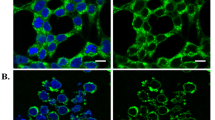Abstract
A HYPOTHESIS of a molecular mechanism of sickled erythrocyte formation was presented in a previous communication1. It was based on an earlier observation2 that the de-oxygenated sickle cell haemolysate forms a gel at 38° but, contrary to our usual experience, it ‘melts’ (or liquefies) on cooling to 0°. Afterwards, the problem was investigated further by means of optical rotatory dispersion investigations at 0° and 38°; it was concluded that at 38° the amino-terminal valyl residue interlocks with the genetically interchanged valyl residue at position 6 in the β-chain, allowing cyclization from carbonyl of the first valyl to the NH of the fourth threonyl by hydrogen bonding. Interaction between the two valyl side-chain residues is due to hydrophobic bonding (Fig. 1, ref. 1). If this hypothesis is correct, then a simple hydrophobic molecule such as propane, which is similar in structure to the valyl side-chain residue, could ‘melt’ the gel of the sickle cell haemolysate at 38° by a process of transferring the hydrophobic bonds. It was found experimentally that propane, ethane and methane can ‘melt’ the gel; these alkane gases can also ‘unsickle’ sickled erythrocytes1.
This is a preview of subscription content, access via your institution
Access options
Subscribe to this journal
Receive 51 print issues and online access
$199.00 per year
only $3.90 per issue
Buy this article
- Purchase on Springer Link
- Instant access to full article PDF
Prices may be subject to local taxes which are calculated during checkout
Similar content being viewed by others
References
Murayama, M., Nature, 202, 258 (1964).
Murayama, M., J. Biol. Chem., 228, 231 (1957).
Murayama, M. Nature, 194, 933 (1962).
Murayama, M., Olson, R. A., and Jennings, W. H., Biochim. Biophys. Acta, 94, 194 (1965).
Pauling, L., and Coryell, C. D., Proc. U.S. Nat. Acad. Sci., 22, 159 (1936).
Author information
Authors and Affiliations
Rights and permissions
About this article
Cite this article
MURAYAMA, M. Orientation of Sickled Erythrocytes in a Magnetic Field. Nature 206, 420–422 (1965). https://doi.org/10.1038/206420a0
Published:
Issue Date:
DOI: https://doi.org/10.1038/206420a0
This article is cited by
-
Paramagnetic artifact and safety criteria for human brain mapping
Dynamic Medicine (2005)
-
Einflu� statischer Magnetfelder auf das Summenaktionspotential der Cochlea des Meerschweinchens
Naturwissenschaften (1989)
-
MRI of sickle cell cerebral infarction
Neuroradiology (1987)
Comments
By submitting a comment you agree to abide by our Terms and Community Guidelines. If you find something abusive or that does not comply with our terms or guidelines please flag it as inappropriate.



